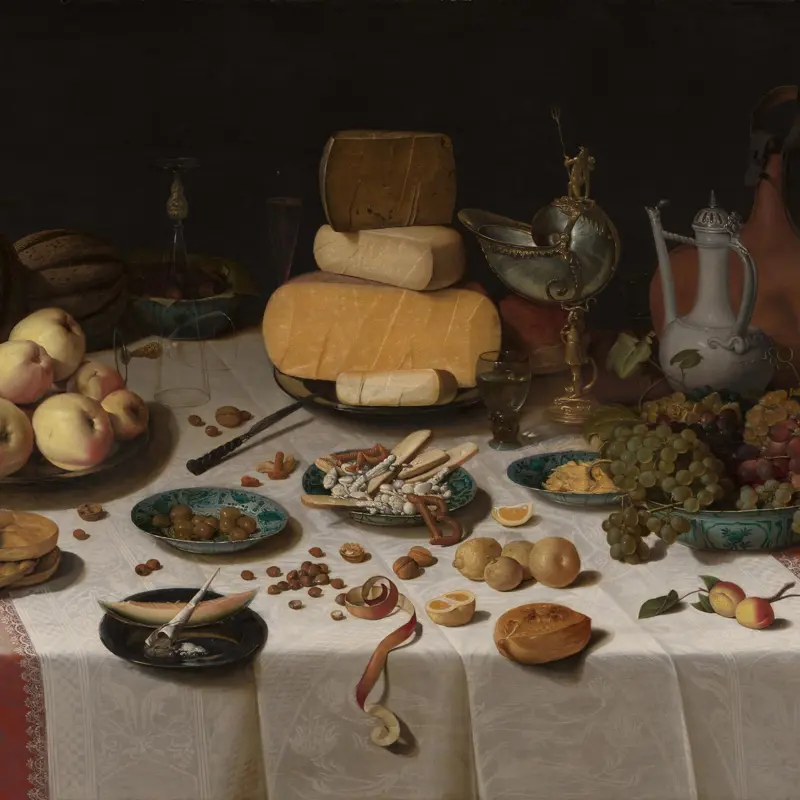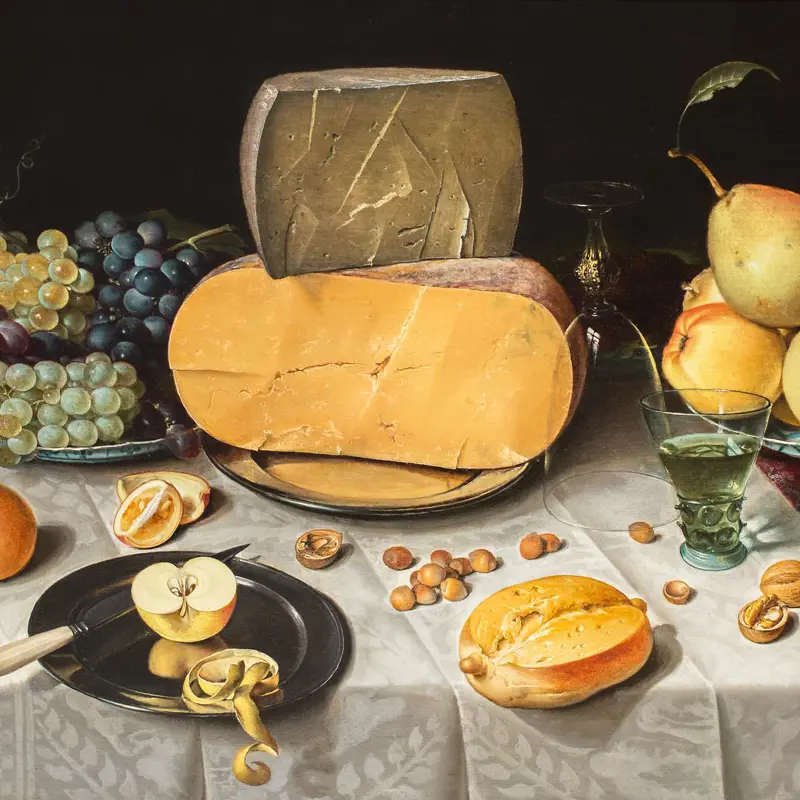Not much is known about Floris van Dijck’s life other than that he was born in Delft, reportedly travelled and painted in Italy and was in Rome around 1600, working as an assistant to Giuseppe Cesari, called Cavaliere d’Arpino. From at least 1603 he worked in Haarlem. His second marriage in October 1627 to the wealthy Cornelia Jansdr Vlasmans meant that from then on he probably did not have to rely on his work as a painter to provide him with an income. This may help to explain why his oeuvre is exceedingly small. Only about a dozen works by him are known. He was nevertheless highly influential as a pioneer in Haarlem of the ‘display piece’ still life showing a richly laden table with, among other things, pieces of fruit, bread and nuts placed around a stack of cheeses on a pewter plate. His compositions are always seen from an elevated viewpoint, not unlike early 17th-century landscapes, which also adopt a bird’s eye perspective.
Floris van Dijck
about 1575 - before 1651
Works by Floris van Dijck
It was in Haarlem that many of the genres for which Dutch painting is best known were first developed. Floris van Dijck was among the city’s most important pioneers in the field of still-life painting. Celebrated for their precise realism, his paintings invariably depict banquet tables laden with...
Floris van Dijck was one of the most important pioneers of so-called ‘display piece’ still lifes. His works are very rare but were highly influential. Almost all his compositions centre on a stack of cheeses on a plate seen from a high viewpoint so that the various elements of the composition are...


